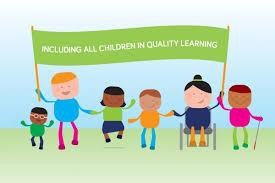UNIT 7: Introduction
Special Needs and Inclusive Education
Key Words, Phrases and Definition
|
Key Words/Phrases
|
Definition
|
|---|---|
|
Differentiation
|
Meeting the needs of all learners. Teachers do this by differentiating what they teach, how they teach, how they organise the learning space, by producing different resources for different learners' needs and by using continuous assessment and intervention to remediate any learning challenges that a learner might face.
|
| Equity | Being fair, and giving equal treatment, to everyone. |
 This unit introduces Special Needs and Inclusive Education and the importance of considering how to support all learners in your classroom. It introduces three types of differentiation strategies as tools to help you support different learners at the same time, including those with Special Educational Needs (SEN).
This unit introduces Special Needs and Inclusive Education and the importance of considering how to support all learners in your classroom. It introduces three types of differentiation strategies as tools to help you support different learners at the same time, including those with Special Educational Needs (SEN).
The unit covers how Inclusive Education links to the Competence Based Curriculum, some of the strategies that you can use in the classroom and gives examples of inclusive education in practice.
How this unit links to the Competence Based Curriculum
Article 26 of the Universal Declaration of Human Rights states that: “Everyone has the right to education, which shall be free and compulsory. All are entitled to all the rights without discrimination of any kind such as race, colour, sex, birth or any status”.
In agreement with the Universal Declaration of Human Rights, the national curriculum of Rwanda is competence based and inclusive in nature. Equity and inclusiveness are two of the essential “Curriculum Values” of the Competence Based Curriculum (CBC), meaning that they are integrated across all subjects and at all levels. The CBC directs schools “to ensure inclusiveness so that every individual is valued and there are high expectations of every learner”. Furthermore, learning must be organised so that “all learners thrive...learners with disabilities, learners with special educational needs, regardless of their background”.
- Teacher’s positive attitude
- Adapting learning resources
- Differentiation of teaching/learning methods
- Working together
